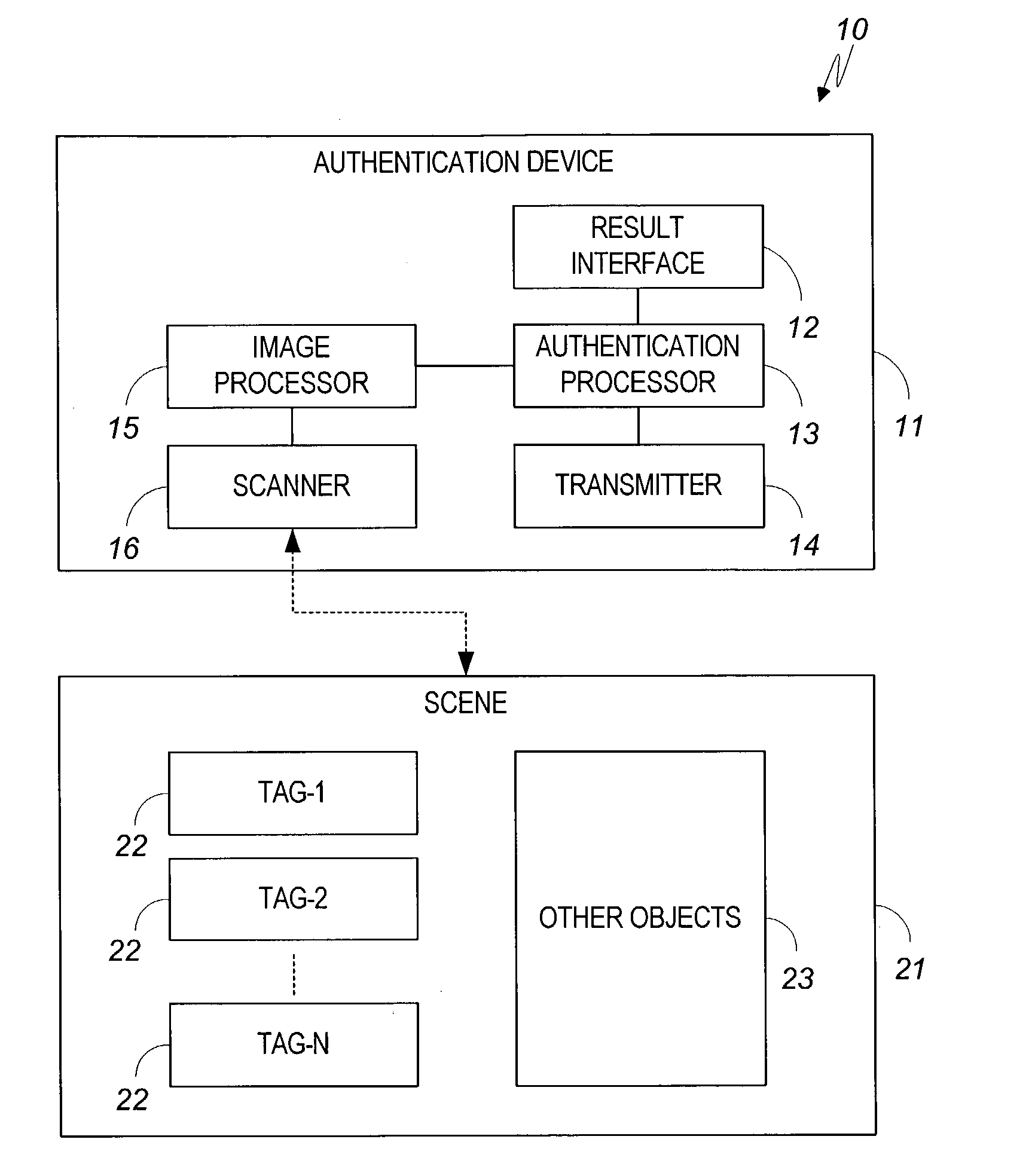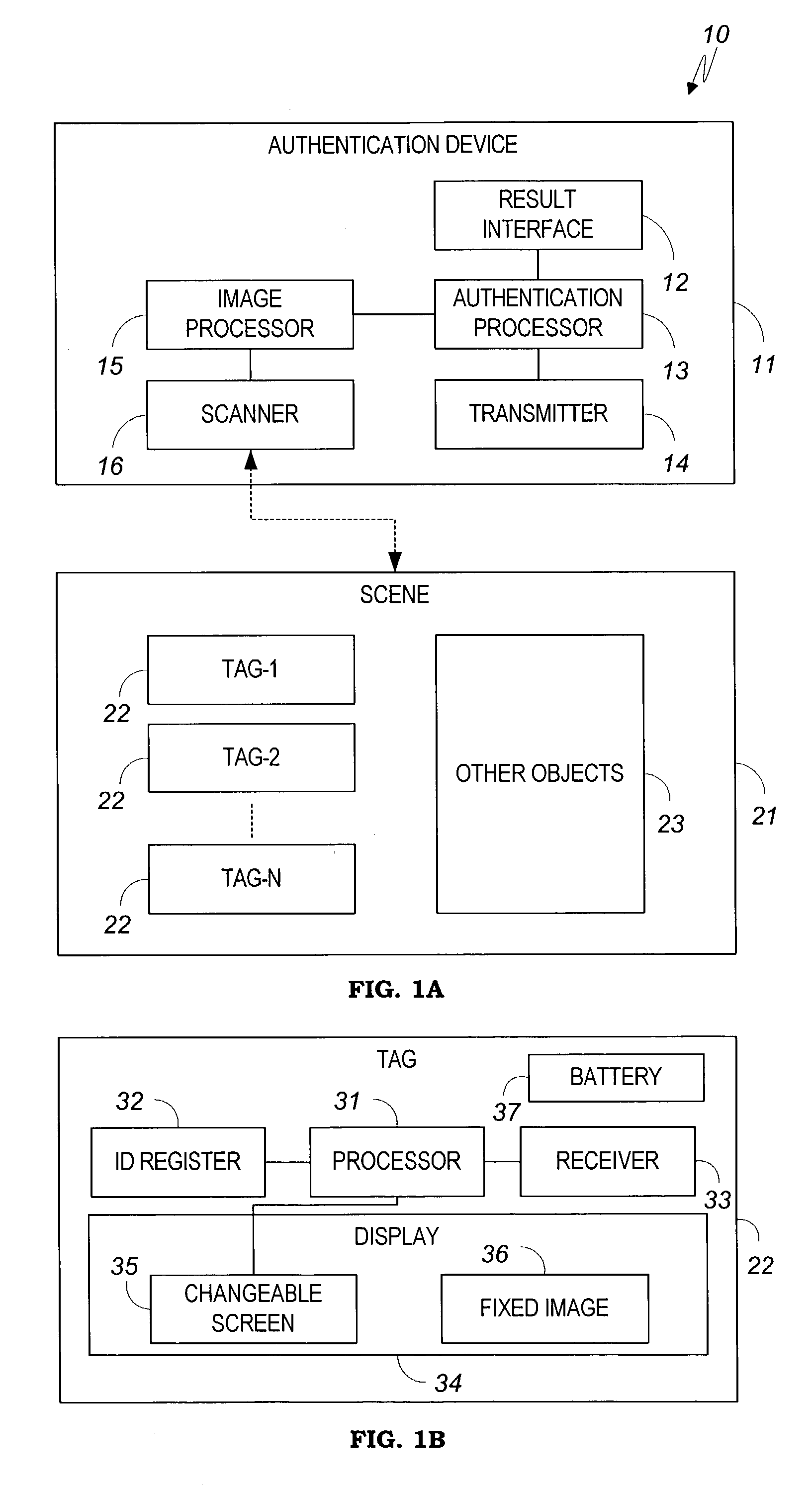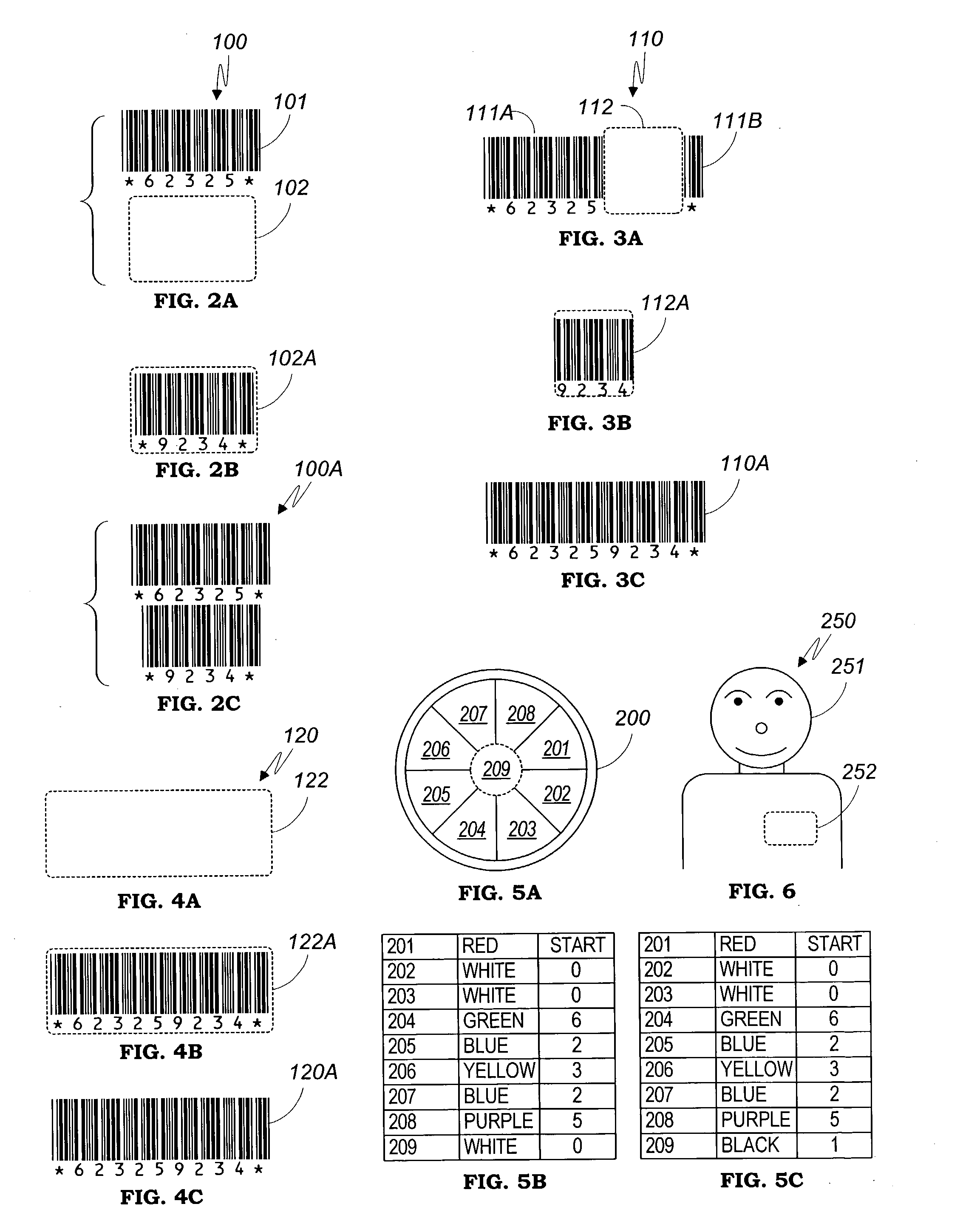System, method, and apparatus for visual authentication
- Summary
- Abstract
- Description
- Claims
- Application Information
AI Technical Summary
Benefits of technology
Problems solved by technology
Method used
Image
Examples
embodiment 80
[0079] FIG. 14A illustrates tearing sensor 40 of FIG. 12. Housing 82 forms part of tag 22C and cannot be separated therefrom without destroying tag 22C. Housing 82 contains two contact points 85A and 85B, which are electrically-connected by magnetic conductor 83. Wires 81A and 81B connect contact points 81A and 81B to eraser 41, which continually monitors the electrical resistance between these wires. The car's metal body 89 attracts magnetic conductor 83 and overcomes spring 84 which tries to pull magnetic conductor 83 away from contact points 85A-B. However, when tag 22C, along with housing 82, is removed from car body 89 even momentarily, spring 84 pulls magnetic conductor 83 away from contact points 85A-B, which changes the electrical resistance between wires 81A-B as measured by eraser 41. This triggers eraser 41 to erase the contents of ID register 32.
embodiment 90
[0080] FIG. 14B illustrates an alternative embodiment 90 for tearing sensor 40 of FIG. 12. In this case, wires 91A-91B are connected by a conducting plate 93, which is attached by a strong adhesive to object 99. The resistance between wires 91A-B is monitored by eraser 41. When tag 22C is removed from object 99, conducting plate 93 will be broken, which triggers eraser 41 to erase the contents of ID register 32.
[0081] Tearing sensors can be applied also when the tag of the present invention is to be attached to a human. For example, a bracelet that must be broken for removal from one's wrist may include conductive materials to serve as a tearing sensor. Then, if a tag connected to the bracelet is used to identify special access rights or privileges granted personally to the wearer (e.g., in connection to a specific event or for specific services), such rights will not transferable to others because the tag will become inoperable upon removal from the wrist of its original wearer.
[00...
PUM
 Login to View More
Login to View More Abstract
Description
Claims
Application Information
 Login to View More
Login to View More - R&D
- Intellectual Property
- Life Sciences
- Materials
- Tech Scout
- Unparalleled Data Quality
- Higher Quality Content
- 60% Fewer Hallucinations
Browse by: Latest US Patents, China's latest patents, Technical Efficacy Thesaurus, Application Domain, Technology Topic, Popular Technical Reports.
© 2025 PatSnap. All rights reserved.Legal|Privacy policy|Modern Slavery Act Transparency Statement|Sitemap|About US| Contact US: help@patsnap.com



